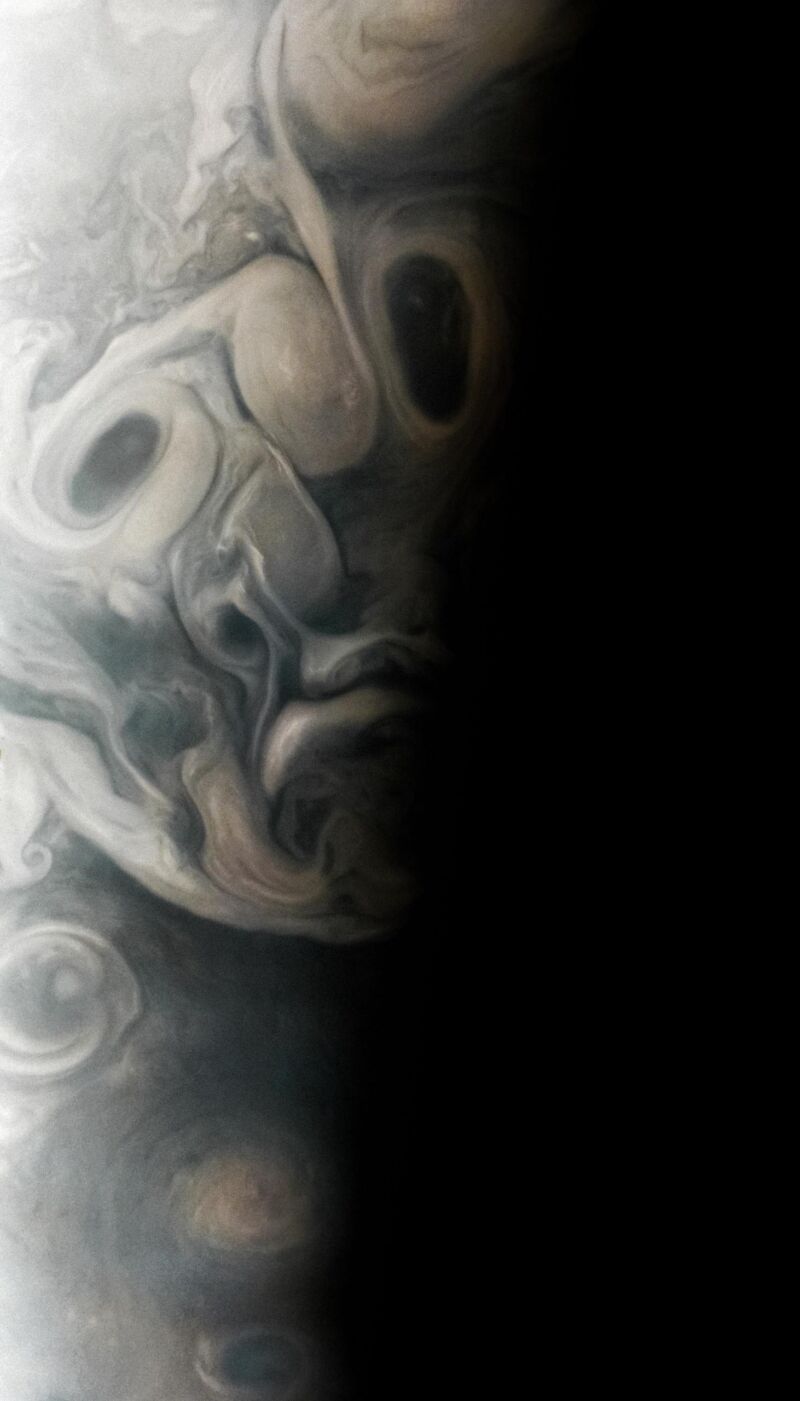
NASA/JPL-Caltech/SwRI/MSSS/ Image processing by Vladimir Tarasov
Good morning. It is October 31—or, for people in many countries around the world, Halloween.
According to the US Library of Congress, Halloween has its roots in the ancient Celtic festival of Samhain. This was a pagan celebration to welcome the harvest at the end of summer, when people would light bonfires and wear costumes to ward off ghosts. Celtic people believed that during the festival, spirits walked the Earth. Later on, Christian missionaries introduced All Souls’ Day on November 2, which perpetuated the idea of the living coming into contact with the dead around the same time of year.
Thanks to the Juno spacecraft, we now have some evidence that spirits may walk on Jupiter, as well. Last month, during its 54th flyby of the largest planet in the Solar System, Juno captured a view of turbulent storms on the gas giant’s surface as it flew about 7,700 km above. The raw images from this flyby were processed by a citizen scientist named Vladimir Tarasov. The result is a spooky visage of some sort of golem staring out of the planet’s surface.
This image reflects our ability to look at something and discern a meaningful image in an otherwise random pattern, a tendency known as pareidolia. Even so, I appreciate Jupiter’s effort to put on a Halloween costume for us all.
Source: NASA.
Do you want to submit a photo for the Daily Telescope? Reach out and say hello.

